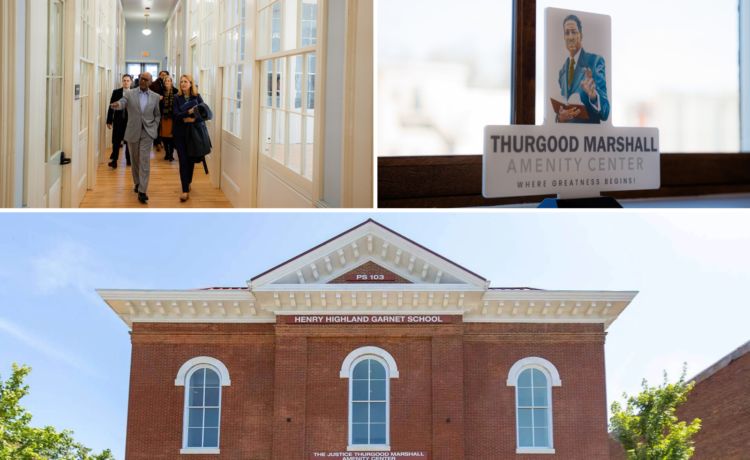Part 2 in a series on U.S. historic preservation policy and current threats
By Dr. Brenna Spray, MHT/MHAA Outreach Coordinator
In Part 1, we explored how the National Historic Preservation Act (NHPA) established the United States’ first cohesive and coordinated national preservation policy – building on earlier, more limited efforts to protect historic places. But for that policy to work on the ground, someone must implement it. That’s where State Historic Preservation Offices (SHPOs) come in.
What a SHPO Actually Does
To participate in federal preservation programs, the NHPA requires that a state establish a SHPO. But how these SHPOs are structured – not to mention how well they are funded – varies widely. Some are housed within state government, usually within parks, natural resources, planning, and/or cultural resources departments. (MHT is part of the Maryland Department of Planning.) Others operate as nonprofit organizations or within universities, often with more limited staffing and resources. The result is a national preservation system that is unified in mission, but highly uneven in capacity.
Within the framework of the NHPA, every SHPO:
- Reviews federally funded or permitted projects under Section 106;
- Offers technical assistance and guidance to local governments, nonprofits, and the public; and
- Carries out additional federal responsibilities as required.
On top of its federally mandated roles, SHPOs may also have state-mandated programs and responsibilities – often evolving out of, or to supplement, the federal requirements. But by the time the NHPA established SHPOs in 1966, Maryland already had a head start.
Maryland’s Early Lead
When the NHPA passed, most states had to scramble to create new preservation agencies. But in Maryland, in 1961, the General Assembly had established MHT as a quasi-public organization that could accept donations of protective easements on historic properties and encourage good stewardship. It wasn’t yet a regulatory agency, but it was one of the first state-mandated bodies of its kind in the country. So, when the federal government asked every state to name a SHPO, Maryland simply appointed MHT. That move plugged Maryland directly into a new national network and gave MHT regulatory roles in partnership with the federal government. A few years later, in 1969, the National Conference of State Historic Preservation Officers was created to represent the interests of SHPOs at the national level and to facilitate communication and collaboration with federal agencies.
The original idea for MHT was simple but forward-thinking: if no one else could step in to help save a historic site, MHT could. In its early years, MHT functioned out of Annapolis and relied on dedicated volunteers, a small staff, and a belief that Maryland’s heritage deserved more than good intentions.
Orlando Ridout IV, MHT’s first director (1962 – 1975), had a long-standing interest in history and architecture, plus a gift for scholarship and storytelling. Known for his deep knowledge of colonial architecture and knack for drawing connections between buildings and the people who built them, Ridout helped formalize documentation practices and set the tone for MHT’s research-grounded approach, establishing what would go on to become the Maryland Inventory of Historic Properties in the early 1960s and working with the Historic American Building Survey on county surveys as early as 1963.
As MHT’s mission expanded, so did its influence. By the 1970s, dedicated state appropriations supplemented some of MHT’s work, providing a more stable financial foundation for project funding and program growth. MHT produced Maryland’s first statewide historic preservation plan, developed policies, and built partnerships with local governments and community advocates. By this time, the first state archaeologist was hired, marking the official start of an archaeology program that would become a key component of MHT’s responsibilities, eventually encompassing not only terrestrial archaeology but also underwater archaeology – a specialization supported in only a handful of other states.
Expanding and Evolving: MHT Grows Up
Interestingly, MHT’s Board of Trustees did not initially agree about whether the original state functions (focused on education and stewardship) should be merged with the federal regulatory functions of the SHPO. Although Orlando Ridout IV served as MHT’s first director and Maryland’s first State Historic Preservation Officer, this role was eventually split between two people, underscoring the tension between civic preservation ideals and the realities of policy implementation. This changed again when J. Rodney Little, who was first appointed as State Historic Preservation Officer in 1978, was named both MHT director and State Historic Preservation Officer in 1981. A respected voice in national preservation policy, Rodney Little championed a vision that focused on saving communities, not just buildings.
During Little’s tenure, Maryland’s preservation infrastructure added initiatives that paralleled and complemented federal programs, beginning with the Maryland Historical Trust Act of 1985, which formally aligned the powers of the MHT director with those of the federally mandated State Historic Preservation Officer, merging their roles and streamlining preservation policy and decision-making in Maryland. This legislation formalized MHT’s activities and included a state-level equivalent of the federal Section 106 process, requiring state agencies to consult with MHT when projects they fund, license, or assist may affect historic properties or archaeological sites. Like its federal counterpart, the state Section 106 process doesn’t stop change, but instead guides it thoughtfully and ensures that state projects – whether it’s a new road, a public school, or a harbor upgrade – consider their impact on historic places.
MHT’s impact was strengthened through major initiatives like the Maryland Historic Revitalization Tax Credit Program (established in 1997) and partnership programs such as the Maryland Heritage Areas Program (1996) and the African American Heritage Preservation Program (2010). These landmark programs extended MHT’s reach across a broader cultural and geographic spectrum, helping to make preservation more accessible, community driven, and inclusive throughout the state. In FY24, MHT distributed over $34 million in grants and tax credits, with almost $116 million in non-state investment, which helped keep historic properties intact and support a diverse range of research.
Built in 1877, Baltimore’s Public School 103 was transformed through Maryland’s Historic Revitalization Tax Credit Program into a dynamic space for community gatherings, honoring the legacy of Thurgood Marshall and Elijah Cummings.
Today, architecture, archaeology, planning, education, and community engagement stand as equally vital components of MHT’s work, reflecting the same enduring belief of MHT’s founders – that historic preservation is a form of public service rooted in good research, strong stewardship, and a deep love of Maryland’s multi-faceted story. The vision continues to thrive thanks to the dedication of MHT’s staff and partners and the robust support of the State of Maryland.
In the final installment of this series, we’ll look at the fuel behind all this work: the Historic Preservation Fund, and what happens when it’s in jeopardy.
Discover more from Our History, Our Heritage
Subscribe to get the latest posts sent to your email.






















